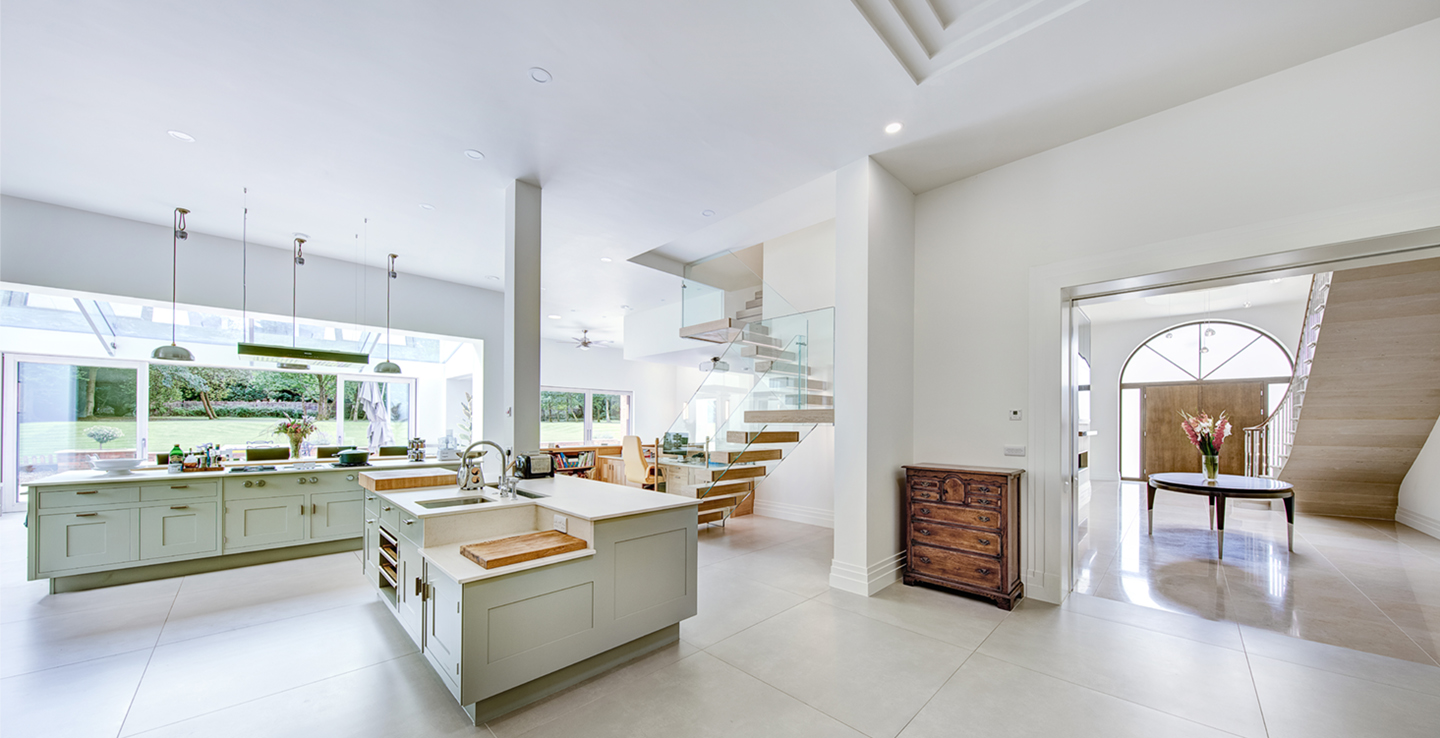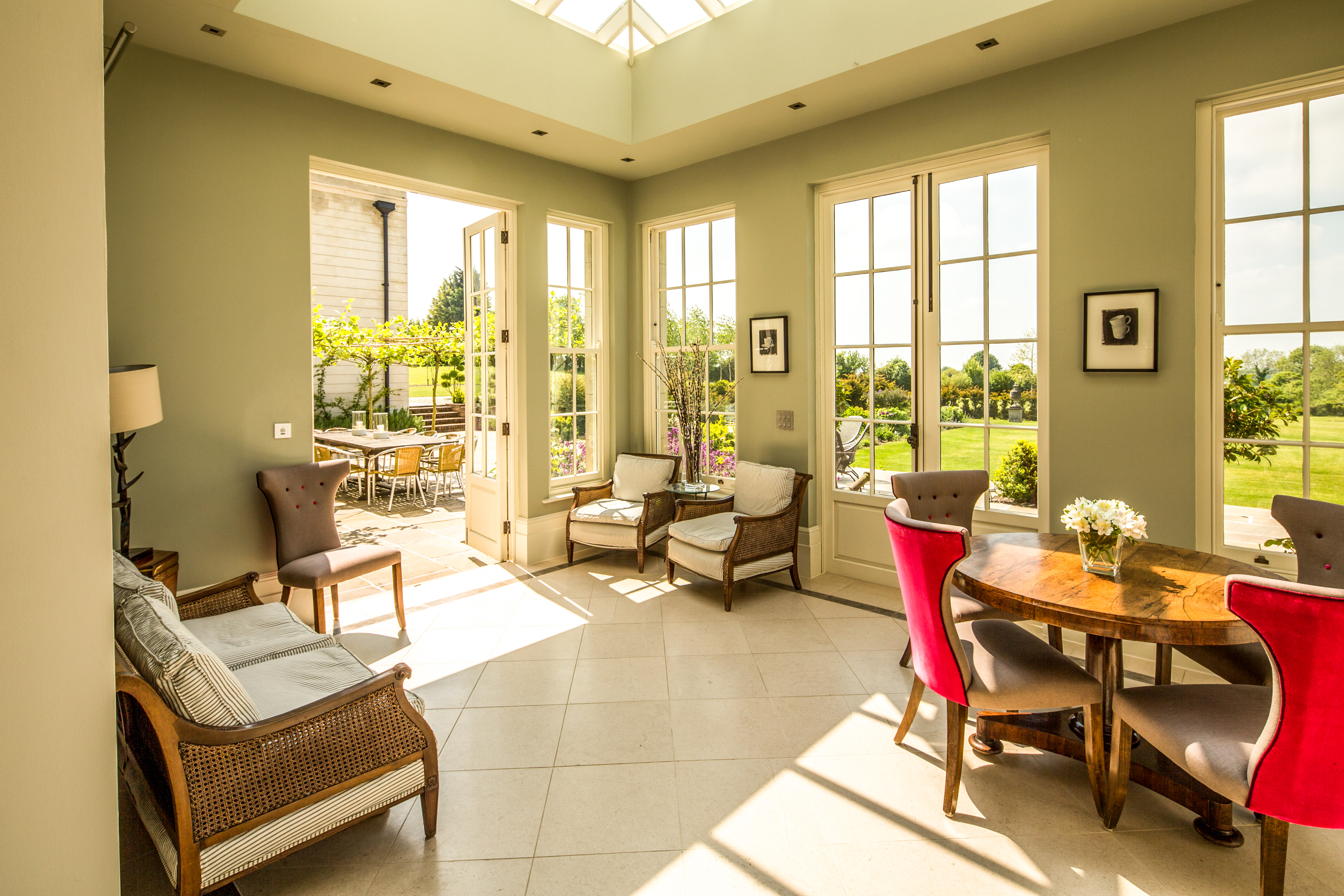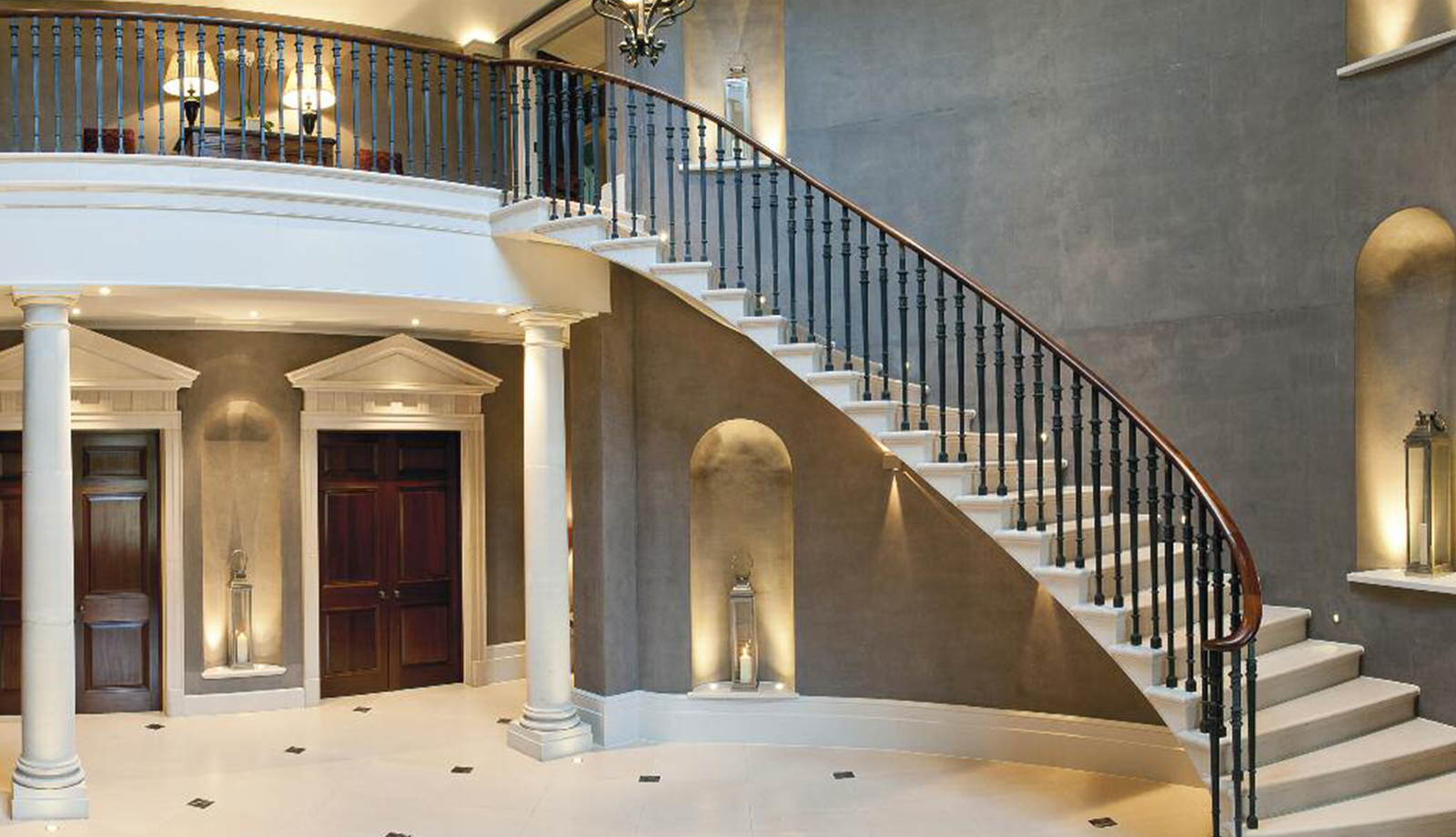Stone flooring
Stone flooring
From the smoothest, white limestone and marble to textured, dark granite and slate, the design possibilities of stone flooring are endless.
Stone floors are suitable for almost any room in the home but are particularly popular in the hallway, kitchen and bathroom.

Honed limestone flooring in kitchen-diner of new home. Photo supplied by Pro Vision
Natural stone is enduringly stylish and will work with any design scheme from a flagstone floor that can look centuries old to large, square tiles for an ultra-modern look. Stone is one of the only flooring options that can be used indoors and outdoors. If you are keen on indoor-outdoor flow, using the same stone can be a great way to blend the two spaces, especially when teamed with bi-fold glass doors. Stone tiles typically come in three finishes. Each finish creates a different effect with polished providing a mirror shine, tumbled a rustic, aged feel and honed a smooth, flat, satin look. Stone flooring can add value and style to any property whether traditional or contemporary.
Which real stone floor tiles to choose?
Limestone is a sedimentary rock, formed mostly on the sea floor which is why it often contains fossils, coral and shells. It can be nearly white to the more common warm honey as well as rarer grey and brown. Limestones tiles range in durability - generally the lighter the softer. Limestone should be matched carefully to location with the higher density ranges most suitable for high traffic areas like hallways. It’s vital to think of the practical demands you’ll be making of a floor as well as looks when you’re choosing. It needs to be able to withstand the daily comings and goings of a family (which may include pets) and, in bathrooms and kitchens, frequent splashes. There is a lot of variation in cost of limestone tiles. For a basic option, you can spend around £34 per m2 but you can spend up to £100 per m2 (Stone Direct, Floors of Stone - prices correct in September, 2019)
 Limestone Flooring in sun room of new home. Photo Supplied by Pro Vision.
Limestone Flooring in sun room of new home. Photo Supplied by Pro Vision.
Travertine is a type of limestone formed near hot springs. It has a honeycomb-like appearance and is peppered with small fissures and quartz details. Travertine floor tiles can be filled with a resin which is colour matched to create a smooth finish; or unfilled for a rustic look. Higher grade, premium travertine has fewer pits while economy ranges have more filler. Natural travertine tiles can be very affordable, starting from around £16 to £18 per m2. The most you will spend on travertine tiles is around £44 per m2. As a natural stone, travertine is a popular and affordable choice.
Slate is a natural, sedimentary rock. Typically, dark in colour (black or grey), it can have a smooth or textured finish. Slate is one of the most hard-wearing natural stones, making it a good choice for both inside and outside. Slate sits at the cheaper end of the spectrum of stone floors. Slate tiles can cost as little as £7 per m2 (Topps Tiles) up to £50-plus per m2 for interesting textures and colours.
Granite tile is made by processing volcanic rock until it has smooth surfaces. The polishing process brings out of the hidden beauty of the stone – the colours and veins. Whether it’s a kitchen, bathroom or living room, the mirrored polished finish will give your floor a light-reflecting, gleaming new look. Granite is hard and resists stains and scratches, so is hard-wearing. Granite tiles start from around £28 per m2 for basic, black, small-sized tiles. Expect to pay around £70 to £80 per m2 for larger format tiles that have more colour and texture (Stone Tile Company).
Marble can look fantastically sleek and glossy. It starts out as limestone but under high temperatures and pressures, forms rock with rich veining typical of marble. It’s less durable than granite but highly prized for its beauty and graces the floors of palaces. If you’re looking to ramp up the luxe in your home, marble may be the way to go. Be aware marble can scratch easily, so it’s best suited to formal areas and not perhaps the best choice if you have children and or/pets. Both granite and marble are luxury options Be prepared to pay £42 per m2 for the most basic tile with average costs around £70-80 per m2.
If you’re a skilled DIYer with the correct tools and time, it is possible to lay stone tiles yourself. However, many suppliers recommend professional installation for a perfect finish, especially if you’ve forked out a lot of money in your natural stone tiles. Don’t forget to budget for the installation which will bump up the cost of your stone floor.
Downsides?
As well as the many pros, there are some downsides too. Stone floors can vary in porosity. The most common issue with limestone, for example, is that it absorbs water and needs to be sealed regularly to prevent stain damage. Certain polished stone, such as marble, can scratch easily. China plates and cups will probably break if dropped on a solid stone floor, so it’s less forgiving then timber flooring. Stone tiles can be cold and hard underfoot. That said, you can easily soften a stone floor with a rug or two. Plus, stone tiles are some of the best flooring for underfloor heating. This is because stone is a great natural conductor of heat, so pipes can quickly and easily transfer heat to the surface.
Beautiful and long-lasting, stone has been used for flooring for centuries. Natural stone doesn’t have to be prohibitively pricey nor feel cold underfoot. It is available in a wide range of materials, colours, textures and finishes to complement most interiors. Ultimately, only you can decide whether natural stone is the best choice for your home.

Polished limestone flooring in hall of new home. Photo supplied by Pro Vision,
